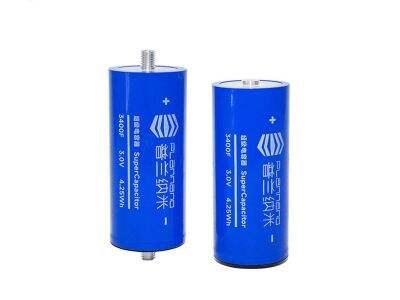They are known as supercapacitors, able to accept and deliver a charge much faster than a traditional battery. They are employed in many electronics to offer a quick jolt of power when necessary. Scientists are continuously trying to develop better materials and better manufacturing techniques for supercapacitors, to make them more efficient and long-lasting. Now, have a look at the most recent progress of SC electrode materials and how to enhance supercapacitor manufacturing process.
Recent advances in supercapacitor electrode materials:
Scientists are investigating new materials that can make supercapacitors work better. For instance, a carbon material such as graphene has been developed as an electrode material with excellent electric conductivity and the large surface area. With the help of graphene, supercapacitors can store more power and deliver it much faster. Researchers are also tinkering with metal oxides such as manganese oxide that might boost the energy density of supercapacitors. Such progress in the research of electrode materials is critical to develop and improve the performance of micro supercapacitor for different applications.
How to enhance the manufacturing of supercapacitors:
Besides the design of new electrode materials, the fabrication technology of supercapacitors must also be optimized for an ideal performance. One method to help the process of manufacturing is through automation and robotics, which will speed up production and make it more precise. Through automation of these steps, less human error and better uniform quality supercapacitors can be guaranteed by manufacturers. In addition, advanced manufacturing technologies, such as additive manufacturing can be used to fabricate complex supercapacitor structures that were previously difficult to make. Advancements in the manufacturing process will result in cost economies and improved production rate of high voltage supercapacitor thus enabling them to be used in many other fields.
Common problems of electrode material of supercapacitors:
It is often difficult to prepare electrode materials for supercapacitors. One of the major problems is to seek for a new material with high energy density and power density. In other words, it has a high energy density and can release that energy rapidly when required. A further problem is stability of the materials: Fit for anodes and cathode are those that are capable of taking up a discharging or charging capacity without degradation. Besides, scientists are constantly in search of materials that are economical and eco-friendly. These challenges involve intensive research and testing to identify the most suitable materials for supercapacitors.
Innovations in supercapacitor electrode materials:
Notwithstanding the above limitations, some promising advancements on supercapacitor electrode materials have been made by researchers. One such innovation is the addition of nanomaterials with high surface areas that can store large amounts of energy, like graphene and carbon nanotubes. They’re also extremely conductive, which means you can charge and discharge them quickly. Fuel cells Another development is the utilization of metal oxides such as Mn x O y and RuO 2 which can provide high capacitance and stability. Hybrid materials with best from two dissimilar choices for electrode in supercapacitors are also being considered by researchers to be better replacement.
The ways of improving the performance of supercapacitors through material development:
In order to heighten the performance of supercapacitors, attention is currently being paid to improving the fabrication process of electrode materials. Structuring of the materials to increase surface area and conductinh path is one way to do this. There is also research to develop novel synthesis techniques that can make high-quality materials more efficient. Moreover, researchers have also been interested in the addition of additives and dopants to improve properties of electrode materials. Through relentless research and development of new materials and manufacturing processes, supercapacitors are better able to meet the requirements for themselves in different applications: smaller sizes with increase energy density, longer cycling life with improved power densities at attractive pricing.
Table of Contents
- Recent advances in supercapacitor electrode materials:
- How to enhance the manufacturing of supercapacitors:
- Common problems of electrode material of supercapacitors:
- Innovations in supercapacitor electrode materials:
- The ways of improving the performance of supercapacitors through material development:

 EN
EN
 AR
AR BG
BG DA
DA NL
NL FI
FI FR
FR DE
DE EL
EL HI
HI IT
IT JA
JA NO
NO PL
PL PT
PT RO
RO RU
RU ES
ES TL
TL ID
ID UK
UK VI
VI TH
TH TR
TR AF
AF MS
MS BE
BE AZ
AZ BN
BN JW
JW KN
KN KM
KM LO
LO LA
LA MY
MY UZ
UZ KY
KY LB
LB XH
XH
